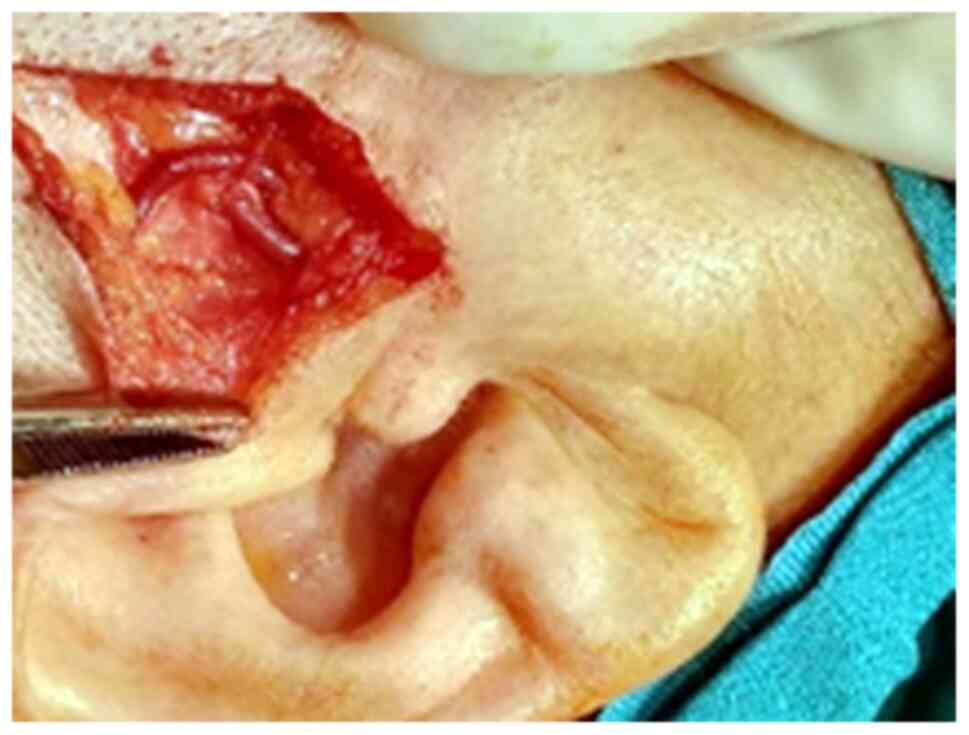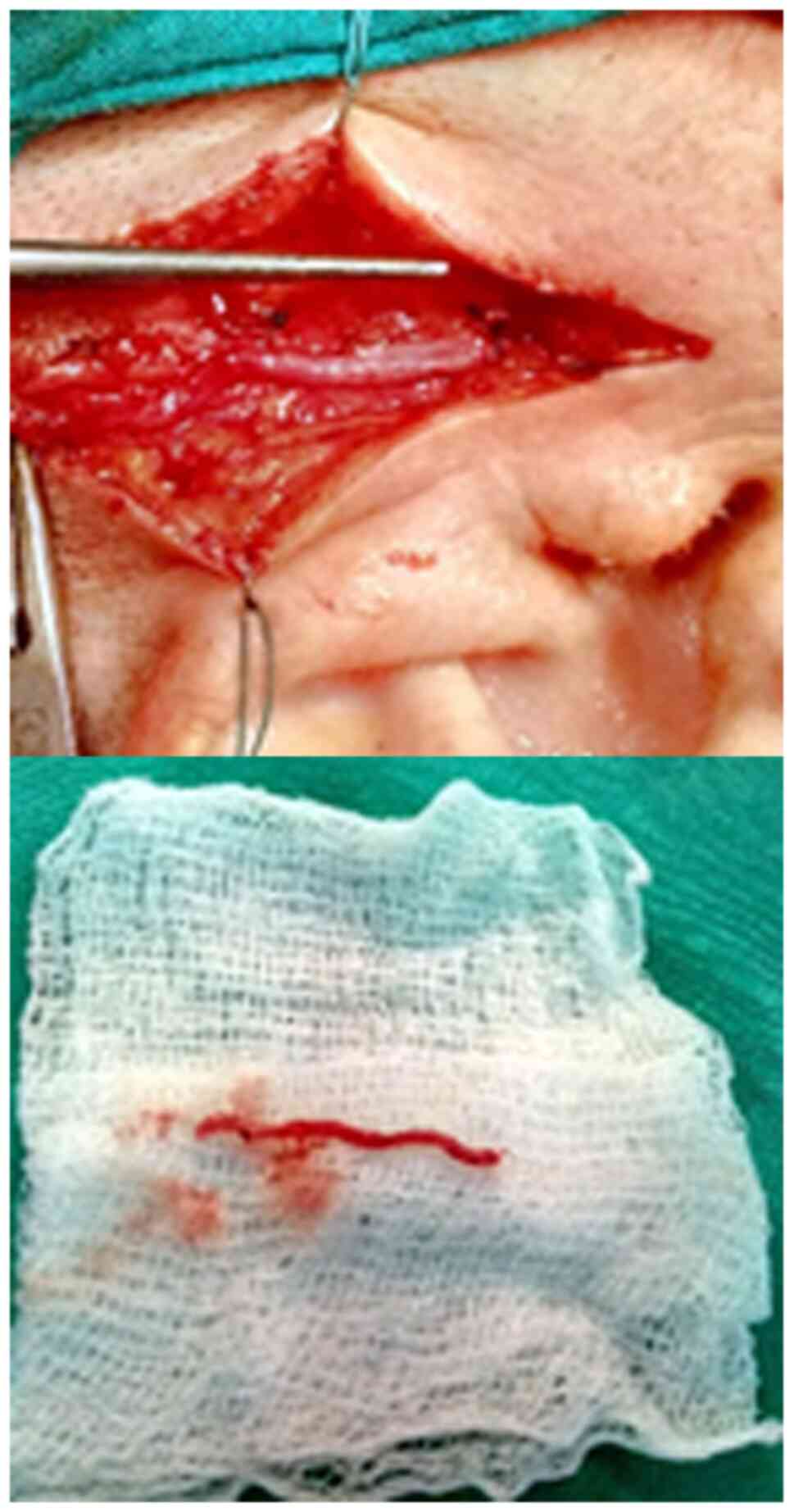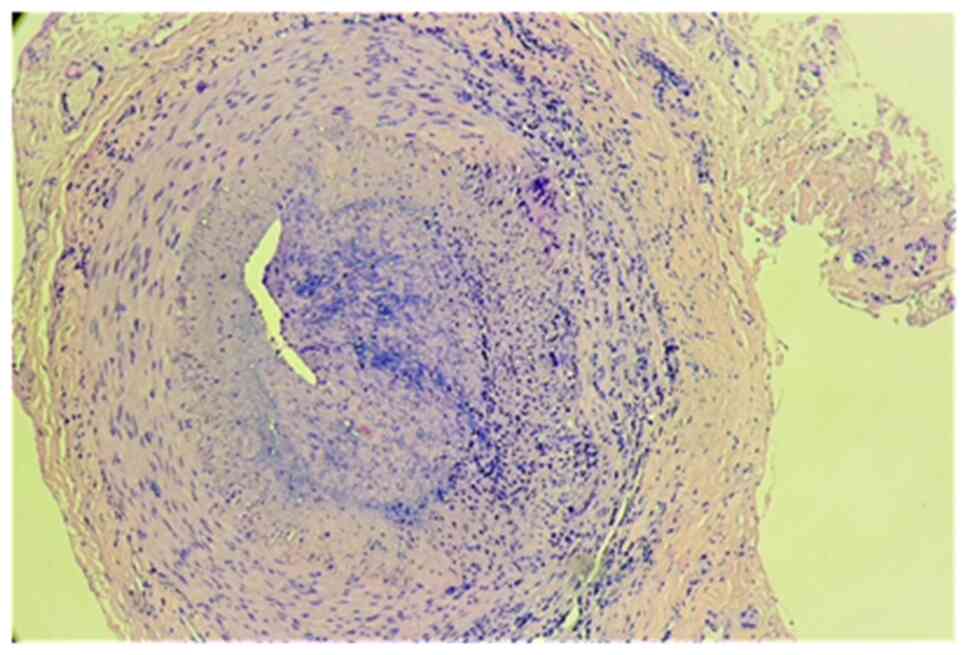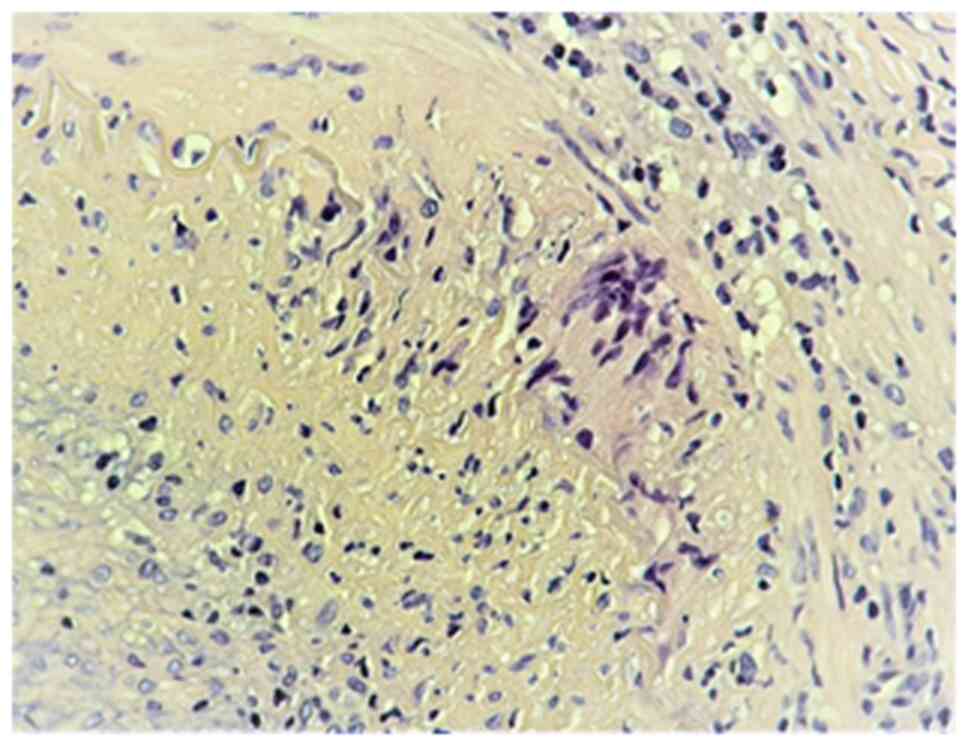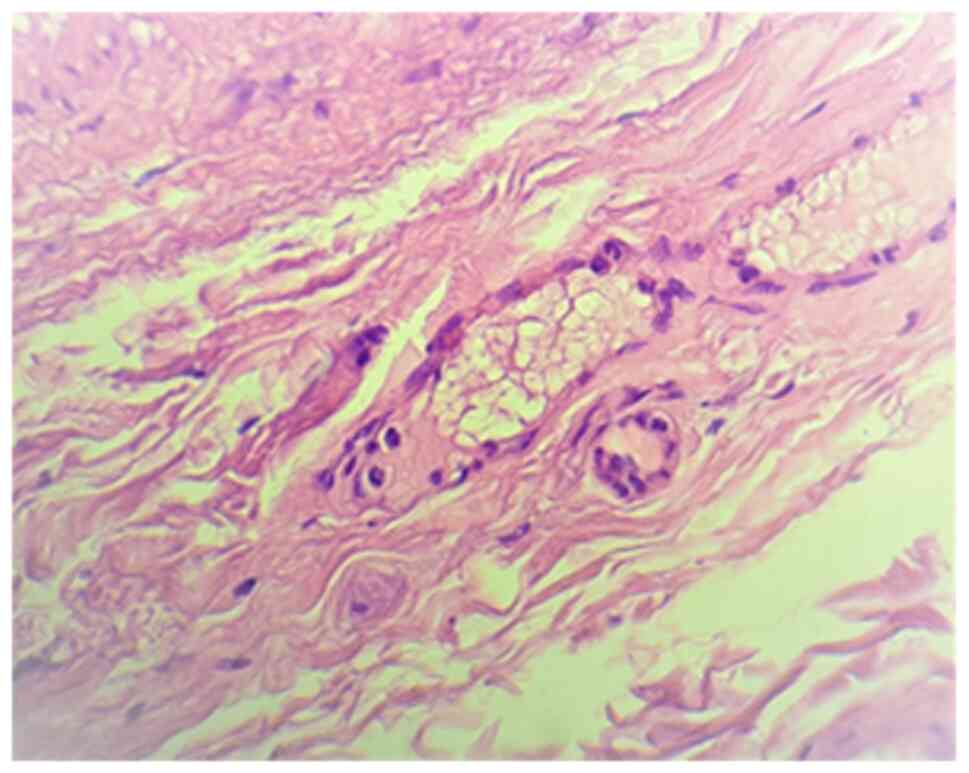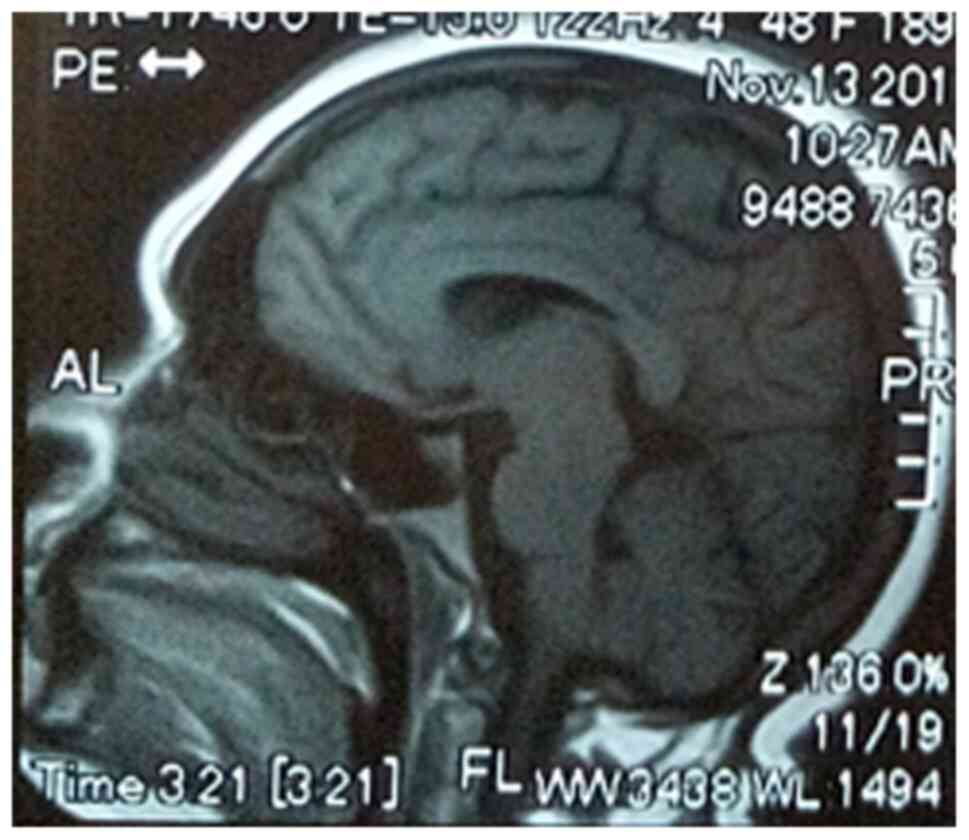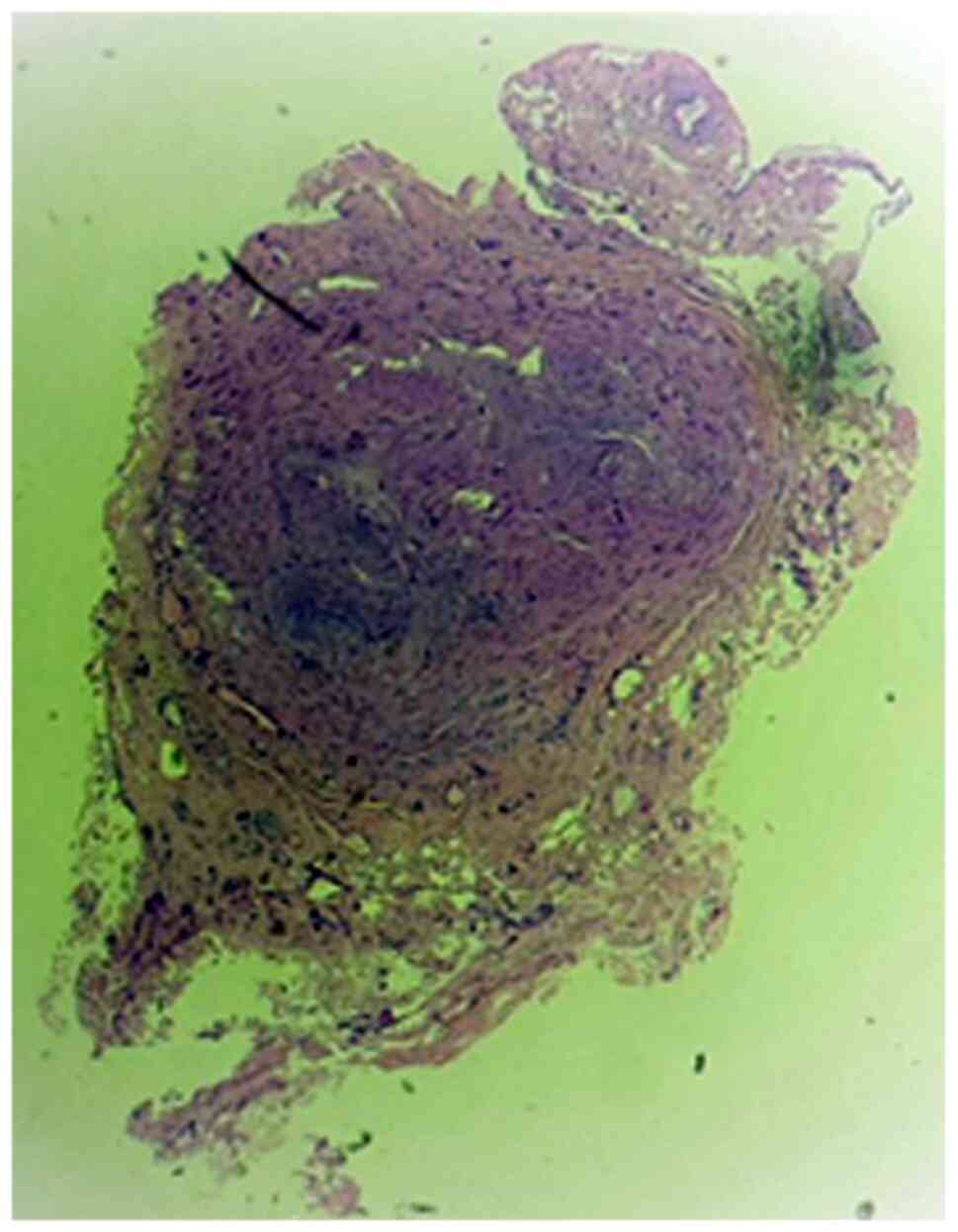|
1
|
Dinkin M and Johnson E: One giant step for
giant cell arteritis: Updates in diagnosis and treatment. Curr
Treat Options Neurol. 23(6)2021.PubMed/NCBI View Article : Google Scholar
|
|
2
|
Robinette ML, Rao DA and Monach PA: The
immunopathology of giant cell arteritis across disease spectra.
Front Immunol. 12(623716)2021.PubMed/NCBI View Article : Google Scholar
|
|
3
|
Serling-Boyd N and Stone JH: Recent
advances in the diagnosis and management of giant cell arteritis.
Curr Opin Rheumatol. 32:201–207. 2020.PubMed/NCBI View Article : Google Scholar
|
|
4
|
Ciccia F, Rizzo A, Ferrante A, Guggino G,
Croci S, Cavazza A, Salvarani C and Triolo G: New insights into the
pathogenesis of giant cell arteritis. Autoimmun Rev. 16:675–683.
2017.PubMed/NCBI View Article : Google Scholar
|
|
5
|
Sharma A, Mohammad AJ and Turesson C:
Incidence and prevalence of giant cell arteritis and polymyalgia
rheumatica: A systematic literature review. Semin Arthritis Rheum.
50:1040–1048. 2020.PubMed/NCBI View Article : Google Scholar
|
|
6
|
Breuer GS, Poltorak V and Nesher G:
Survival of patients with giant cell arteritis: A controversial
issue. Clin Exp Rheumatol. 38 (Suppl 124):S210–S213.
2020.PubMed/NCBI
|
|
7
|
Ralli M, Campo F, Angeletti D, Minni A,
Artico M, Greco A, Polimeni A and de Vincentiis M: Pathophysiology
and therapy of systemic vasculitides. EXCLI J. 19:817–854.
2020.PubMed/NCBI View Article : Google Scholar
|
|
8
|
Choy EH, De Benedetti F, Takeuchi T,
Hashizume M, John MR and Kishimoto T: Translating IL-6 biology into
effective treatments. Nat Rev Rheumatol. 16:335–345.
2020.PubMed/NCBI View Article : Google Scholar
|
|
9
|
Berghi NO, Dumitru M, Vrinceanu D,
Ciuluvica RC, Simioniuc-Petrescu A, Caragheorgheopol R, Tucureanu
C, Cornateanu RS and Giurcaneanu C: Relationship between chemokines
and T lymphocytes in the context of respiratory allergies (Review).
Exp Ther Med. 20:2352–2360. 2020.PubMed/NCBI View Article : Google Scholar
|
|
10
|
Arias M, Heydari-Kamjani M and Kesselman
MM: Giant cell arteritis and cardiac comorbidity. Cureus.
13(e13391)2021.PubMed/NCBI View Article : Google Scholar
|
|
11
|
González-Gay MÁ, Ortego-Jurado M, Ercole L
and Ortego-Centeno N: Giant cell arteritis: Is the clinical
spectrum of the disease changing? BMC Geriatr.
19(200)2019.PubMed/NCBI View Article : Google Scholar
|
|
12
|
Gualtierotti R, Marzano AV, Spadari F and
Cugno M: Main oral manifestations in immune-mediated and
inflammatory rheumatic diseases. J Clin Med. 8(21)2018.PubMed/NCBI View Article : Google Scholar
|
|
13
|
Hayreh SS: Giant cell arteritis: Its
ophthalmic manifestations. Indian J Ophthalmol. 69:227–235.
2021.PubMed/NCBI View Article : Google Scholar
|
|
14
|
Albarrak AM, Mohammad Y, Hussain S, Husain
S and Muayqil T: Simultaneous bilateral posterior ischemic optic
neuropathy secondary to giant cell arteritis: A case presentation
and review of the literature. BMC Ophthalmol.
18(317)2018.PubMed/NCBI View Article : Google Scholar
|
|
15
|
Rinden T, Miller E and Nasr R: Giant cell
arteritis: An updated review of an old disease. Cleve Clin J Med.
86:465–472. 2019.PubMed/NCBI View Article : Google Scholar
|
|
16
|
Rotaru M, Iancu GM, Gheucă Solovăstru L,
Glaja RF, Grosu F, Bold A and Costache A: A rare case of multiple
clear cell acanthoma with a relatively rapid development of the
lower legs. Rom J Morphol Embryol. 55 (Suppl 3):S1171–S1179.
2014.PubMed/NCBI
|
|
17
|
van der Geest KSM, Sandovici M, van Sleen
Y, Sanders JS, Bos NA, Abdulahad WH, Stegeman CA, Heeringa P,
Rutgers A, Kallenberg CGM, et al: Review: What is the current
evidence for disease subsets in giant cell arteritis? Arthritis
Rheumatol. 70:1366–1376. 2018.PubMed/NCBI View Article : Google Scholar
|
|
18
|
Aghdam KA, Sanjari MS, Manafi N,
Khorramdel S, Alemzadeh SA and Navahi RAA: Temporal artery biopsy
for diagnosing giant cell arteritis: A ten-year review. J
Ophthalmic Vis Res. 15:201–209. 2020.PubMed/NCBI View Article : Google Scholar
|
|
19
|
Brooks PJ, Glogauer M and McCulloch CA: An
overview of the derivation and function of multinucleated giant
cells and their role in pathologic processes. Am J Pathol.
189:1145–1158. 2019.PubMed/NCBI View Article : Google Scholar
|
|
20
|
Michailidou D, Mustelin T and Lood C: Role
of neutrophils in systemic vasculitides. Front Immunol.
11(619705)2020.PubMed/NCBI View Article : Google Scholar
|
|
21
|
Guggenberger K and Bley T: Imaging in
large vessel vasculitides. Rofo. 191:1083–1090. 2019.PubMed/NCBI View Article : Google Scholar
|
|
22
|
Schäfer VS, Jin L and Schmidt WA: Imaging
for diagnosis, monitoring, and outcome prediction of large vessel
vasculitides. Curr Rheumatol Rep. 22(76)2020.PubMed/NCBI View Article : Google Scholar
|
|
23
|
Harky A, Fok M, Howard C and Bashir M:
Current controversies in large-vessel inflammatory vasculitis and
thoracic aortic aneurysm disease. Int J Angiol. 28:215–225.
2019.PubMed/NCBI View Article : Google Scholar
|
|
24
|
Baig IF, Pascoe AR, Kini A and Lee AG:
Giant cell arteritis: Early diagnosis is key. Eye Brain. 11:1–12.
2019.PubMed/NCBI View Article : Google Scholar
|
|
25
|
Lensen KD, Voskuyl AE, Comans EF, van der
Laken CJ and Smulders YM: Extracranial giant cell arteritis: A
narrative review. Neth J Med. 74:182–192. 2016.PubMed/NCBI
|
|
26
|
Lyons HS, Quick V, Sinclair AJ, Nagaraju S
and Mollan SP: A new era for giant cell arteritis. Eye (Lond).
34:1013–1026. 2020.PubMed/NCBI View Article : Google Scholar
|
|
27
|
Mackie SL, Brouwer E, Conway R, van der
Geest KSM, Mehta P, Mollan SP, Neill L, Putman M, Robinson PC and
Sattui SE: Clinical pathways for patients with giant cell arteritis
during the COVID-19 pandemic: An international perspective. Lancet
Rheumatol. 3:e71–e82. 2021.PubMed/NCBI View Article : Google Scholar
|
|
28
|
De Smit E, O'Sullivan E, Mackey DA and
Hewitt AW: Giant cell arteritis: Ophthalmic manifestations of a
systemic disease. Graefes Arch Clin Exp Ophthalmol. 254:2291–2306.
2016.PubMed/NCBI View Article : Google Scholar
|
|
29
|
Pfeil A, Oelzner P and Hellmann P: The
treatment of giant cell arteritis in different clinical settings.
Front Immunol. 9(3129)2019.PubMed/NCBI View Article : Google Scholar
|
|
30
|
Strehl C, Ehlers L, Gaber T and Buttgereit
F: Glucocorticoids-all-rounders tackling the versatile players of
the immune system. Front Immunol. 10(1744)2019.PubMed/NCBI View Article : Google Scholar
|
|
31
|
Uribe JA, Aggarwal I, Witthayaweerasak J,
Liao YJ, Berry GJ, Sab UK and Weyand CM: Refractory giant cell
arteritis complicated by vision loss from optic atrophy and
maculopathy associated with pachymeningitis. J Neuroophthalmol.
38:17–23. 2018.PubMed/NCBI View Article : Google Scholar
|
|
32
|
Mollan SP, Horsburgh J and Dasgupta B:
Profile of tocilizumab and its potential in the treatment of giant
cell arteritis. Eye Brain. 10:1–11. 2018.PubMed/NCBI View Article : Google Scholar
|
|
33
|
Harrington R, Al Nokhatha SA and Conway R:
Biologic therapies for giant cell arteritis. Biologics. 15:17–29.
2021.PubMed/NCBI View Article : Google Scholar
|
|
34
|
Ing EB, Wang DN, Kirubarajan A,
Benard-Seguin E, Ma J, Farmer JP, Belliveau MJ, Sholohov G and
Torun N: Systematic review of the yield of temporal artery biopsy
for suspected giant cell arteritis. Neuroophthalmology. 43:18–25.
2018.PubMed/NCBI View Article : Google Scholar
|
|
35
|
Berger CT, Sommer G, Aschwanden M, Staub
D, Rottenburger C and Daikeler T: The clinical benefit of imaging
in the diagnosis and treatment of giant cell arteritis. Swiss Med
Wkly. 148(W14661)2018.PubMed/NCBI View Article : Google Scholar
|
|
36
|
Ghinai RA, Mahmood S, Mukonoweshuro P,
Webber S, Wechalekar AD and Moore SE: Diagnosing light chain
amyloidosis on temporal artery biopsies for suspected giant cell
arteritis. J Neuroophthalmol. 37:34–39. 2017.PubMed/NCBI View Article : Google Scholar
|















